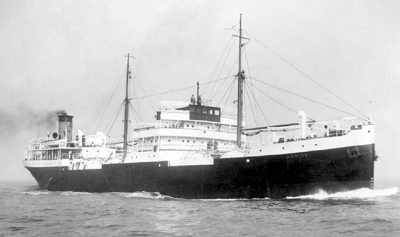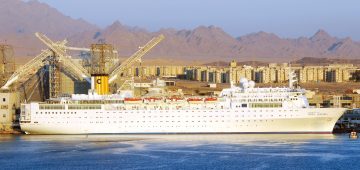90 Years Of Liquid Gas Transport
By Sandy Kinghorn

The shipment of the two main LPG gases, propane and butane, has been a vital part of world energy supplies for almost the last ninety years. In 1927, Jean-Baptiste Auguste Kessler junior, a director of Royal Dutch Shell, made the decision to transport propane and butane gases from petroleum refineries. Propane and butane, or a mixture of these two gases, are inherent within crude oil at oilfields, and are produced by natural gas separation or crude oil refining. In the early days at oilfields, they were often flared off because of the difficulty of transportation. It is essential to remove propane and butane during the refining of crude oil, because if left in refined petrol they cause evaporation of stored petrol. They can be transported on land by pipeline, but for sea transport they must be liquefied to reduce their volume by 99.8%. Shell then ordered that year the first LPG tanker in the world from the Hebburn yard of Hawthorn, Leslie & Co. Ltd., Agnita of 4,700 dwt, which was launched on 20th November 1930 and completed in March 1931 for ‘La Corona’ Petroleum Maats of Holland, the British Shell fleet being the Anglo-Saxon Petroleum Co. Ltd. of London.

Agnita used vertical pressurised cylindrical tanks in order to simultaneously carry any two of three different cargoes, gas oil, sulphuric acid and propane, with the gas oil carried inside or outside the cylinders, the acid or propane would be inside. The domed tops of her cylinders protruded well above her weather deck on her normal voyage after loading sulphuric acid at Rotterdam in her cylinders and she proceeded to Curacao to discharge the acid, and load gas oil both inside and outside of her cylindrical tanks. Alternatively, gas oil might only be loaded outside of the cylinders and in this case she would proceed to Port Arthur in Texas to load propane into her cylindrical tanks and proceed to Europe with both the propane and gas oil as cargo. She had a service speed of 11.5 knots from a single eight cylinder oil engine of 2,350 bhp, and her hull had dimensions of length 306 feet and beam of fifty feet. Three years later in 1934, a Dutch Shell ‘Triple Twelve’ tanker, Megara of 12,600 dwt, was also converted to carry propane.
Agnita had an exciting time in World War II, and was the first Shell tanker to be attacked by air on 17th December 1939. She was inward bound from Cardiff en route for Rotterdam to load sulphuric acid and ten miles south of Hastings when bombed and strafed three times by a Heinkel 111 bomber. She was badly shaken after being lifted bodily by the bombs with damage to her engine room and radio transmitter. She made for Southampton for repairs and continued in service for another fifteen months until sunk just north of the equator in position 2.30 North, 25.0 West while on passage from Freetown to Caripito in Venezuela. She had been captured by the raider Kormoran and her 38 crew and one gunner were taken prisoner. Megara continued carrying propane throughout the war until she became a depot ship at Gibraltar in 1950.

Subscribe today to read the full article!
Simply click below to subscribe and not only read the full article instantly, but gain unparalleled access to the specialist magazine for shipping enthusiasts.


Comments
Sorry, comments are closed for this item